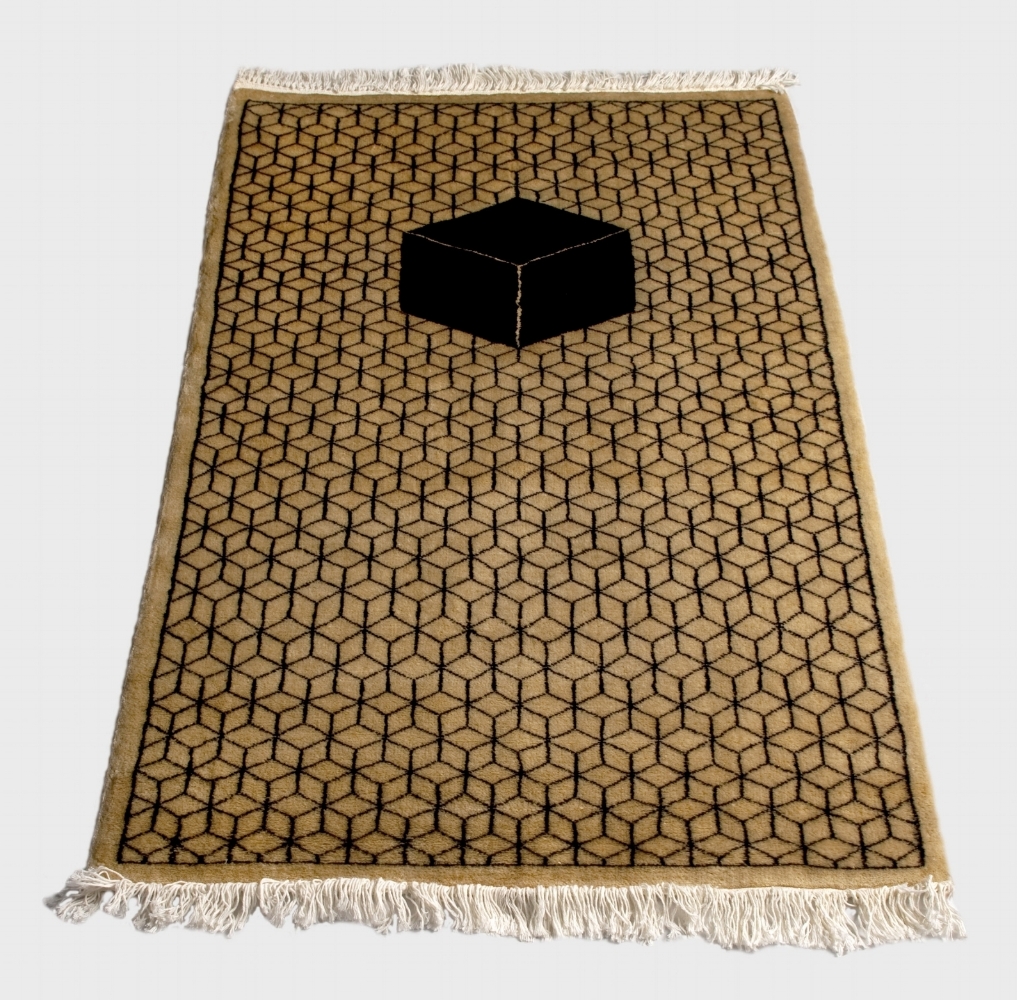Sotheby's:
Abdullah M. I. Syed utilises a variety of media in his artistic practice, through which he communicates complex political ideas. His commentary includes controversial topics such as the War on Terror, immigration, and Western attitudes towards the East.
In 1915, Kasimir Malevich created one of his most famous works, Black Square, a self-explanatory painting made in his proclaimed Cubo-Futuristic style. Malevich was a pioneer of geometric abstract art and his influence can even be seen in the art created today. In 2008, the German artist Gregor Schneider was commissioned to make a sculpture for the Venice Biennale that was to be placed in St. Mark’s Square. The 50-foot cube was made of scaffolding covered by black fabric and was inspired by the Ka’ba in Mecca. It is interesting to note that the word Ka’ba in fact, means ‘cubic building’. Afraid of inciting the Islamic community, Schneider’s project was blocked and prevented from being erected during the biennale. Reacting to this news, Schneider commented “We are at war, we can’t even discuss Islam anymore. Everyone is afraid. It’s not the Muslims that are stopping this project, it’s the Christians. If we can’t build an abstract cube anymore, what can we do?” (G. Harris, “Art in the age of global terrorism”, Art Newspaper, No. 160, July - August 2005, p. 7)
Almost a century after Malevich, Syed has cleverly amalgamated the sacred with the profane by commissioning this prayer rug, a very traditional Islamic ritualistic object but rendering it in a completely contemporary fashion. Covered in overlapping and intersecting Necker cubes with a large black cube in place where Muslims would place their head while praying in the direction of the Ka’ba. The Necker cube is an optical illusion that was discovered in 1832. The orientation of the cube can be altered by shifting the observer's point of view. When viewed from above, one side of the cube tends to be seen as closer and conversely when seen from below, a different side comes to the front. By combining this geometric paradigm with a religious object, Syed is using the contemporary constructs of abstraction and cubism to highlight and educate people with pre-conceived notions about Islam in a subtle and poetic manner. This beautiful object holds many different meanings depending on the viewer.
FEATURED IN PUBLICATION:
MEDIA COVERAGE:
